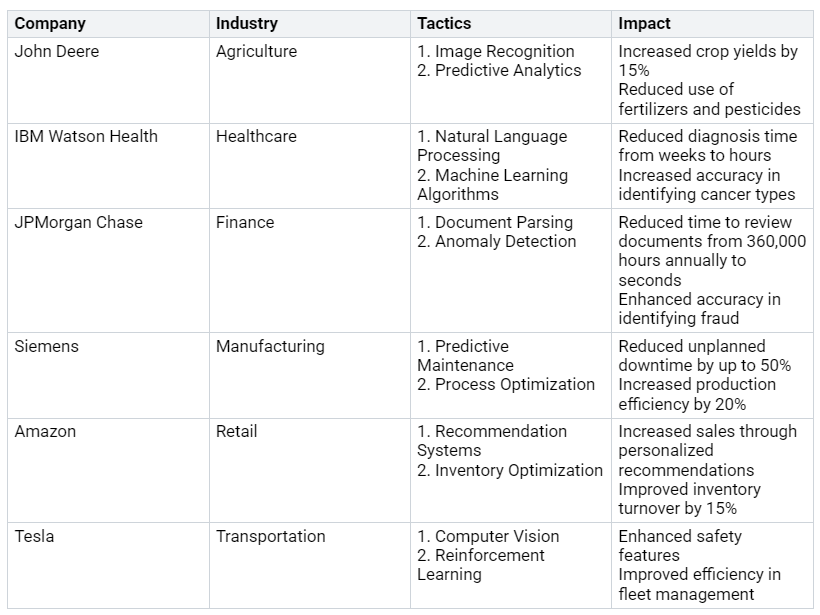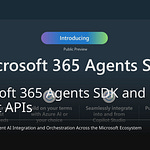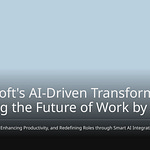AI-driven transformation is essential for achieving business success by leveraging artificial intelligence in various tasks to enhance operational efficiency. In today’s rapidly evolving market, this transformation is crucial for maintaining a competitive edge. The benefits of integrating AI into business processes are significant, including:
Increased Efficiency: Automating routine tasks not only saves time but also reduces errors.
Improved Decision-Making: AI analyzes vast amounts of data, providing valuable insights that inform strategic choices.
Enhanced Customer Experience: Tailored interactions lead to greater customer satisfaction and loyalty.
Statistics indicate a growing trend in AI adoption among businesses. By 2025, approximately 92% of companies are expected to implement this technology. Organizations that embrace AI-driven transformation experience substantial gains, with the potential to reduce manual work time by up to 70% and foster deeper customer engagement through personalized experiences.
Key Takeaways
AI-driven change helps work better by automating simple tasks. This lets teams focus on more important jobs.
Adding AI to business tasks improves decision-making with data analysis. This leads to smarter choices.
Custom experiences for customers using AI make them happier and more loyal. This means more customers stay.
Companies that use AI can save money and work faster. This helps them stay ahead of their rivals.
To use AI well, check if your organization is ready. Make a clear plan and involve your team in the process.
Understanding AI Technologies
AI technologies are very important for changing businesses. They help companies make processes easier, improve decisions, and make customers happier. Here are some common types of AI technologies you might see in businesses:
Types of AI Technologies
Decision Support Systems (DSS): These systems look at data to give advice for decisions in areas like accounting and healthcare.
AI-enabled Quality Control: Factories use machine vision and deep learning to make sure products are high quality.
Personalized Customer Services: AI studies customer data to create special experiences, which helps keep customers engaged.
Safety Monitoring: Many industries use AI to check safety conditions and behaviors, making operations safer.
Functional Area Improvements: AI helps in customer service, marketing, supply chain management, HR, and cybersecurity, making different business areas better.
In some fields, AI technologies have made big changes. For example, in healthcare, AI looks at data for better diagnoses and treatment plans. In finance, AI finds fraud and checks transactions quickly. These uses show how AI can change how different industries work.
Key Features of AI
The main features of AI technologies help businesses change a lot. Here are some of the most important parts:
Efficiency: AI makes things more efficient by organizing workflows and resources. Almost half of workers using AI say they save five or more hours each week.
Data-Driven Insights: AI helps with decision-making by providing insights and recognizing patterns. For example, GenAI at ServiceNow did the work of 50 full-time workers in just four months.
Innovation: AI speeds up innovation by finding market chances and helping develop products quickly. A survey says professionals in legal, tax, and compliance could save 12 hours a week.
Empowerment: AI gives power to workers by taking care of routine tasks, letting them focus on important work.
Customer Experience: AI offers better customer experiences through real-time personalization and smart service routing.
A 2023 report from McKinsey says that organizations using AI well are 1.5 times more likely to reach their digital transformation goals. This shows how important it is to add AI technologies to your business plans.
By learning about these AI technologies and their features, you can see how they help change businesses and lead to success.
AI’s Impact on Business Success
AI is very important for helping businesses succeed. It makes operations better and helps connect with customers. When you use AI in your work, you can see big improvements in both areas.
Enhancing Operational Efficiency
AI makes operations better by automating simple tasks and improving workflows. This means your team can work on more important things. Here are some ways AI helps with operational efficiency:
Automation of Repetitive Tasks: AI takes care of boring tasks. This lets your workers focus on more valuable work.
Predictive Analytics: AI looks at data to predict trends. This helps you make smart choices.
Resource Optimization: AI helps use resources wisely. This keeps your business running smoothly.
Look at these examples of companies that used AI to improve their operations:
These examples show how AI can greatly improve operations, which helps your business succeed.
Improving Customer Engagement
AI also helps a lot with customer engagement. By using AI tools, you can create special experiences for your customers. Here are some key benefits of using AI for customer engagement:
Personalized Interactions: AI looks at customer data to customize interactions. This leads to happier customers.
Faster Response Times: AI chatbots give quick help, so customers wait less.
Predictive Customer Insights: AI helps you learn about customer behavior. This lets you guess what they need.
Results from businesses using AI show great improvements in customer engagement:
You can also expect to see:
37% increase in customer retention
25% increase in customer satisfaction ratings
20% increase in average order value
335% ROI
These numbers show how AI affects customer engagement. It leads to better results for customers and helps your business succeed.
AI’s ability to improve operations and customer engagement makes it very important for your transformation plan. By using AI, you prepare your business for success in a tough market.
Benefits of AI Transformation
AI transformation has many good things for your business plan. When you use AI, you can lower costs and increase productivity.
Cost Reduction
One big benefit of AI transformation is saving money. Many companies see big savings after using AI. For example, research shows that 33% of businesses save money because of AI. Here are some important numbers:
AI helps make operations smoother. This leads to a 30% reduction in delivery times by improving routes. Also, predictive maintenance can cut equipment downtime by 25-50%. These changes not only save money but also make everything work better.
Increased Productivity
AI transformation also helps increase productivity in many fields. By automating simple tasks, AI lets your workers focus on more important jobs. For example, AI tools can help less-skilled workers, like call center agents, by doing easy tasks. This help leads to big productivity boosts.
Experts think that using AI could raise productivity growth by 0.3 to 3.0 percentage points each year for the next ten years. In healthcare, AI makes things easier by helping read scans and suggest diagnoses. This saves time and cuts down on paperwork.
Plus, companies that use AI well can see a 70% reduction in routine customer inquiries through smart self-service. This not only makes customers happier but also lets your team handle tougher problems.
By using AI transformation, you set your business up for success. The mix of saving money and boosting productivity gives you an edge that can help your organization grow.
Strategies for Digital Transformation with AI
Using AI for digital transformation needs a clear plan. First, check if your organization is ready. Then, create a strategy. This helps make sure your AI projects match your business goals and give good results.
Assessing Organizational Readiness
Before starting AI changes, check how ready your organization is. This check shows what you do well and where you need to improve. Think about these parts:
By knowing these parts, you can make a plan for using AI well. This plan should include ways to deal with problems like resistance to change and rules to follow.
Developing a Clear AI Strategy
After checking your readiness, the next step is to make a clear AI strategy. This strategy should connect AI projects with your overall business goals. Here are important parts to think about:
Focus on Digital Tools: Find the digital tools your team needs to do well.
Enhance Cybersecurity: Make your cybersecurity tools and rules better to keep data safe.
Invest in R&D: Increase your budget for research and development to encourage new ideas.
Hire Competitive Talent: Attract and keep skilled workers who can lead AI projects.
Create User-Friendly Systems: Build digital systems that are easy for your team to use.
Leverage Data Analytics: Use data analysis to help make decisions and improve results.
Engage Stakeholders: Get team members and stakeholders to support your AI projects.
Your strategy should also have a plan for building the systems and skills needed to grow AI. Set success measures (KPIs) for your AI projects and a way to check them before expanding. This makes sure your AI changes fit your business goals and have a big impact.
A global survey by McKinsey found that about 78% of organizations used AI in at least one business area in 2024. This shows how important it is to add AI to your plans. Connecting AI projects with business goals not only boosts profits but also improves customer experience.
By following these strategies, you can successfully use AI in your organization. This will help your business succeed in the digital world.
Overcoming Challenges in AI Adoption
Using AI can be hard. You might face problems that slow you down. Knowing these challenges helps you work through the AI world better.
Addressing Data Privacy Concerns
Data privacy is a big worry when using AI. You need to make sure your organization keeps user data safe. Here are some ways to handle these worries:
Make clear privacy rules so users understand.
Set up strong consent processes to inform people about data use.
Teach users about their data rights to help them feel empowered.
Also, focus on data management. Create rules for data use and check them regularly. It’s important to improve your security with data encryption and strict access controls. You can also fix algorithm bias by using fair datasets and adding bias detection tools. Being open is important; use explainable AI methods to gain trust. Keep up with changing rules to keep your organization safe.
Managing Resistance to Change
People often resist change when new AI tools come in. Workers might worry about losing jobs or not understand AI’s role. To deal with this resistance, try these ideas:
Build trust by being open, communicating, and including everyone. Let employees take part in developing and using AI.
Create special training programs to help workers learn AI skills for their jobs.
Set clear goals to measure how well AI projects are doing and share these results openly.
It’s important to address worker worries about AI for it to succeed. If leaders don’t support AI efforts, it can fail. Making sure AI projects match business goals helps everyone understand and reduces pushback. Getting employees involved early makes them feel like they own the process and lessens resistance.
By focusing on these ideas, you can build a culture that welcomes AI. This change is key for successful digital transformation.
Future Trends in AI and Transformation
AI and Automation
AI-driven automation is changing how businesses work. You can expect big changes in jobs and business tasks. Here are some important trends to notice:
Enhanced Efficiency: AI tools help automate important sales and marketing tasks. This makes customer engagement and decision-making better through data analysis.
New Job Opportunities: While AI takes over some tasks, it also creates new jobs that need different skills. You will need to adjust to these changes.
Flexible Workforce Scheduling: AI solutions make scheduling workers easier and more accurate. This helps both managers and employees.
As you start using AI, remember that it can change the skills needed in your workforce. The future will need people who can adapt and keep learning.
The Role of AI in Sustainability
AI is very important for helping organizations with sustainability goals. You can use AI to lessen environmental damage and use resources better. Here are some ways AI helps with sustainability:
Energy Efficiency: AI makes energy use better and manages smart grids well.
Climate Monitoring: AI helps with climate monitoring and waste management.
Pollution Control: AI supports pollution control and efforts to save biodiversity.
Consumer Behavior: AI affects how consumers make sustainable choices.
By adding AI to your sustainability plans, you can encourage new ideas in environmental technologies. This not only helps the Earth but also meets what consumers expect from responsible businesses.
As you explore the changing world of AI, think about the ethical issues that come with it. Focus on making your AI systems clear, fair, and open. This builds trust and ensures responsible use of data.
Using AI-driven transformation is very important for your business success. When you add AI to your work, you can save money and make better decisions. Here are some important points:
AI makes operations run better, which helps productivity.
Customized, AI-based solutions fit specific business needs.
Companies using AI get a better position in their fields.
To stay ahead, follow these steps:
Learn about AI and how it works.
Find out what your business needs.
Build a skilled team.
Start a small test project.
Teach your workers.
By doing these things, you prepare your organization for growth and new ideas. The future of business depends on how well you adapt and use AI.
FAQ
What is AI-driven transformation?
AI-driven transformation means using artificial intelligence in business tasks. This use makes things work better, helps with decisions, and improves how customers feel.
How can AI improve operational efficiency?
AI takes care of boring tasks and makes workflows better. This lets your team work on more important things, which boosts productivity and lowers costs.
What are the main challenges of adopting AI?
Some common problems are worries about data privacy, pushback against change, and not being ready as an organization. Solving these problems is key for using AI successfully.
How does AI enhance customer engagement?
AI customizes interactions using customer information. It helps answer questions faster and gives helpful insights, which leads to happier customers and more loyalty.
What steps should I take to start using AI?
Start by checking if your organization is ready for AI. Create a clear plan, build a skilled team, and begin with small test projects to try out AI uses.














